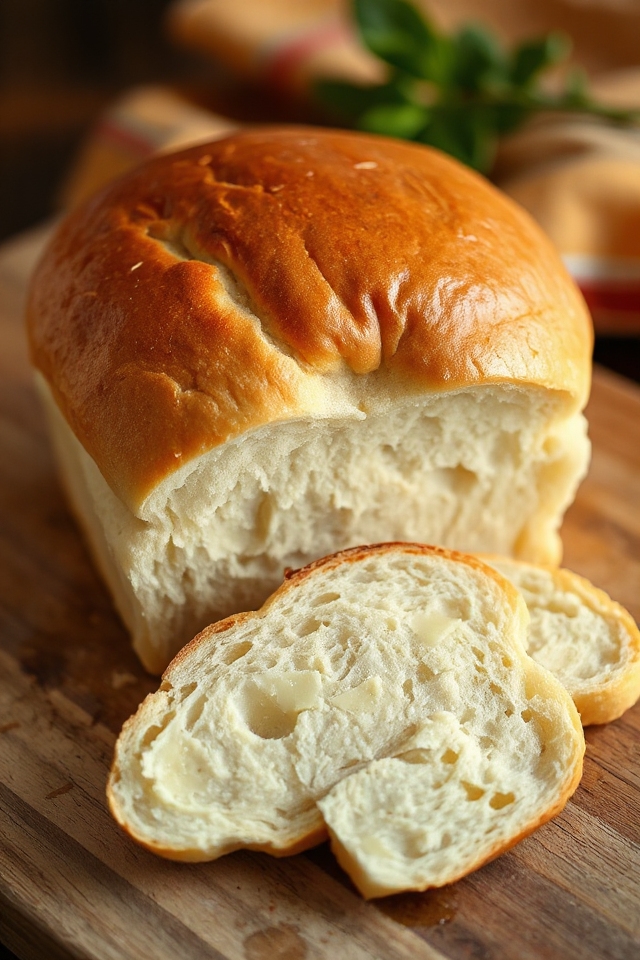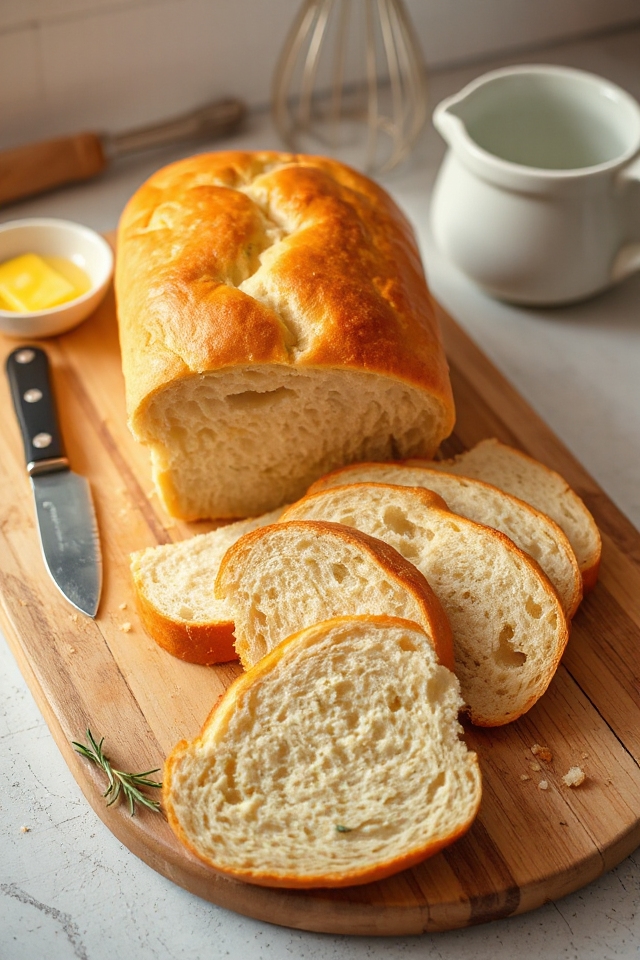Why You’ll Love This Best White Bread Recipe
When you take a bite of this homemade white bread, you’ll instantly understand why it’s the best. The crust is golden and crisp, while the inside is soft, fluffy, and just the right amount of chewy.
I love how the aroma fills my kitchen as it bakes, creating a warm, inviting atmosphere. You can toast it for breakfast, make the perfect sandwich, or enjoy it fresh with butter.
Each slice brings comfort and nostalgia, reminding me of family gatherings. Trust me, once you’ve tasted this bread, you won’t want to go back to store-bought ever again!
Ingredients of Best White Bread
When it comes to making the best white bread, having the right ingredients is key. You want to gather everything you need before diving into the mixing and kneading. It’s like prepping for a big game; you wouldn’t want to forget your gear, right?
So, let’s line up those ingredients. Here’s what you’ll need to create that golden crust and fluffy interior:
- 1/4 ounce package active dry yeast
- 1 1/4 cups hottest tap water
- 2 teaspoons salt
- 2 tablespoons sugar
- 2 tablespoons lard or shortening
- 3 1/2 to 4 cups unbleached all-purpose flour
- Essential wheat gluten (optional, but it can give your bread a nice boost)
- Melted butter or shortening (for greasing the tin)
Now, aside from just gathering these items, it’s important to pay attention to their quality. For instance, using unbleached all-purpose flour is a must if you want that lovely texture.
And if you’ve got essential wheat gluten on hand, you might want to toss a little in there—it helps the dough rise beautifully and gives that fluffy, chewy bite we all love.
Oh, and don’t skimp on the yeast. Fresh yeast will make all the difference in how well your bread rises.
How to Make Best White Bread

After the dough has risen nicely, it’s time to shape it into a loaf. Grease your 9×5 inch loaf pan with some melted butter or shortening.
Place the dough in the pan and give it a little basting with some more melted fat because, why not? Cover it again and let it rise until it’s puffing above the rim of the pan, looking all proud of itself.
Preheat your oven to 450 degrees, and once it’s hot enough, pop that loaf in. Bake for 10 minutes and then lower the temperature to 325 degrees to bake for another 25 minutes.
If your bread starts browning too quickly, don’t panic—just cover it with foil. And when it’s done, take it out and flip it upside down on a cooling rack.
Let it cool completely, and then you’re ready to slice into that glorious loaf of the best white bread. Just remember, if it doesn’t turn out perfect the first time, there’s always the next loaf—practice makes perfect, right?
Best White Bread Substitutions & Variations
Exploring substitutions and variations can bring a delightful twist to your white bread journey.
For a healthier option, I often swap out half of the all-purpose flour for whole wheat flour. If I want a richer flavor, I add a tablespoon of honey or use olive oil instead of lard.
Sometimes, I toss in herbs like rosemary or thyme for a savory twist. For a sweet treat, I’ve replaced some flour with finely chopped dried fruits or nuts.
Don’t hesitate to experiment; each variation can transform your bread into something uniquely delicious!
Additional Tips & Notes
Experimenting with substitutions and variations can lead to some exciting outcomes, but a few additional tips can enhance your white bread experience even further.
First, always use fresh yeast for the best rise; it makes a noticeable difference. I find that kneading by hand creates a more tactile connection with the dough, helping me understand its texture.
Also, let the dough rise in a warm, draft-free area for ideal results.
Finally, if you want a softer crust, brush the loaf with melted butter right after baking. Trust me, these little touches can elevate your homemade white bread to another level!
